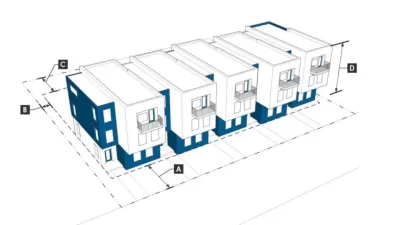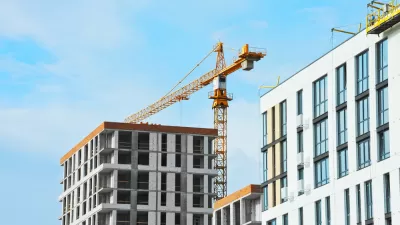New research shows that affordable housing mandates usually don't raise housing costs, but often fail to benefit benefit the lowest-income families.

Research from the National Housing Conference's Center for Housing Policy clarifies the impacts of inclusionary zoning policies, which require developers to include some affordable units in their buildings. Brentin Mock from CityLab summarizes the major findings.
The good: In most cases, inclusionary zoning requirements haven't driven housing costs up. Nor have they slowed housing production. Those findings challenge the argument of some developers who oppose affordable-housing mandates, especially in California.
The bad: Inclusionary zoning policies have largely failed to create affordable housing for the lowest-income households—and most policies aren't designed to target them. That can lead to a lack of support for programs:
After all, if it’s going to be called “inclusionary zoning,” it should include those who are most in need of housing. People actually need to be able to buy into the properties in order to buy in to the policy.
Pittsburgh is considering ways to address this problem, which Washington, D.C. also dealt with recently. San Francisco, New York, Seattle, and more cities throughout the United States have also recently taken up questions around inclusionary zoning.
The research also notes that the success of these policies is influenced by factors that can vary by city and over time, like the strength of an area’s housing market or a policy's compatibility with state law.
FULL STORY: Inclusionary Zoning Does Not Drive Up Housing Costs

Alabama: Trump Terminates Settlements for Black Communities Harmed By Raw Sewage
Trump deemed the landmark civil rights agreement “illegal DEI and environmental justice policy.”

Study: Maui’s Plan to Convert Vacation Rentals to Long-Term Housing Could Cause Nearly $1 Billion Economic Loss
The plan would reduce visitor accommodation by 25% resulting in 1,900 jobs lost.

Planetizen Federal Action Tracker
A weekly monitor of how Trump’s orders and actions are impacting planners and planning in America.

Federal Homelessness Agency Places Entire Staff on Leave
The U.S. Interagency Council on Homelessness is the only federal agency dedicated to preventing and ending homelessness.

Restoring Northern India’s Himalayan ‘Water Temples’
Thousands of centuries-old buildings protect the region’s natural springs and serve as community wells and gathering places.

Milwaukee to Double Bike Share Stations
Bublr Bikes, one of the nation’s most successful, will add 500 new e-bikes to its system.
Urban Design for Planners 1: Software Tools
This six-course series explores essential urban design concepts using open source software and equips planners with the tools they need to participate fully in the urban design process.
Planning for Universal Design
Learn the tools for implementing Universal Design in planning regulations.
Caltrans
Smith Gee Studio
Institute for Housing and Urban Development Studies (IHS)
City of Grandview
Harvard GSD Executive Education
Toledo-Lucas County Plan Commissions
Salt Lake City
NYU Wagner Graduate School of Public Service





























